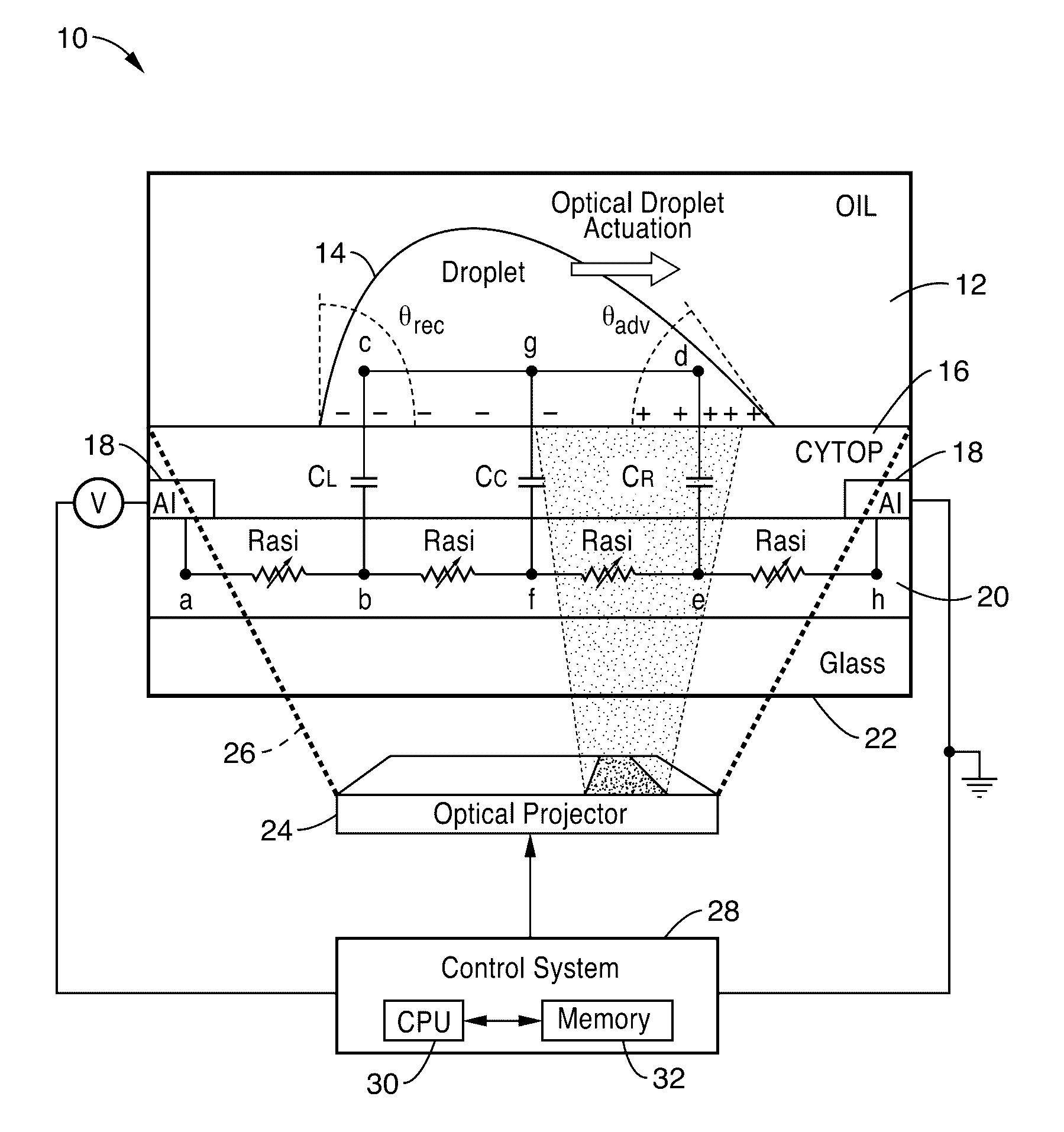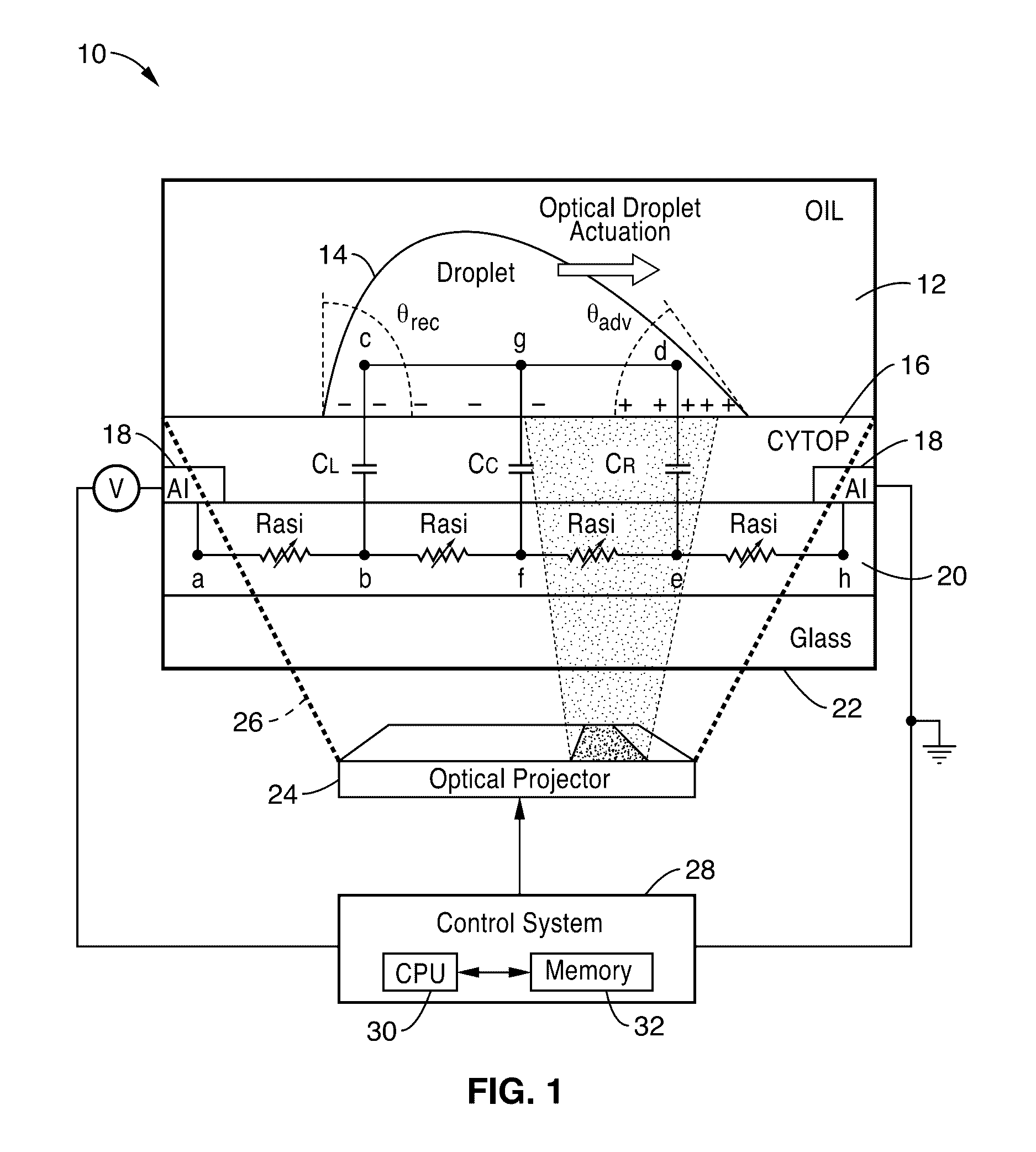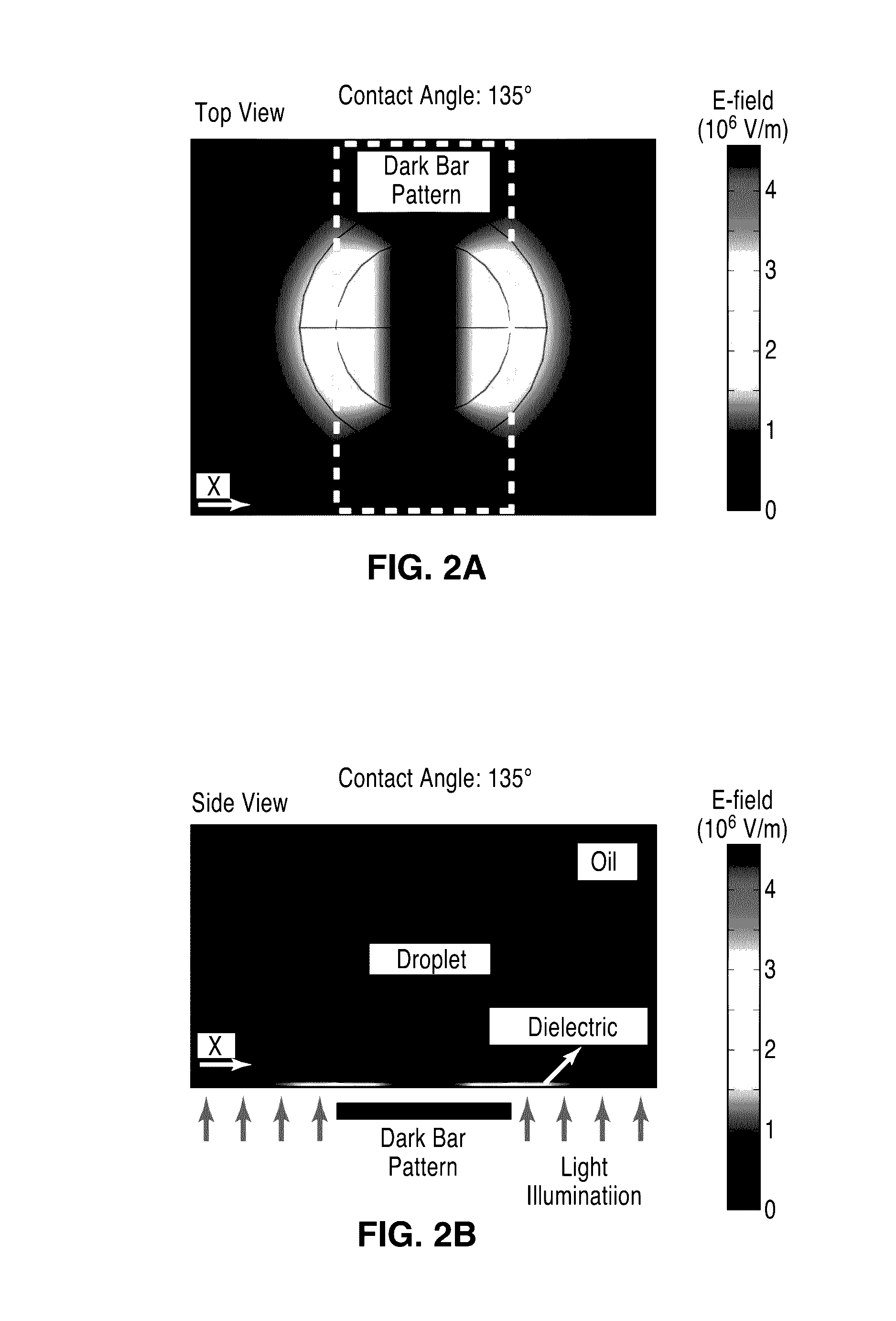Single sided continuous optoelectrowetting (SCEOW) device for droplet manipulation with light patterns
- Summary
- Abstract
- Description
- Claims
- Application Information
AI Technical Summary
Benefits of technology
Problems solved by technology
Method used
Image
Examples
embodiment 10
[0031]FIG. 1 illustrates an embodiment 10 of our inventive SCOEW device, and its equivalent circuit model, for directing aqueous droplets of a second fluid 14 within a first fluid (e.g., oil) wetting a dielectric layer 16, disposed over electrodes 18 and a photoconductive layer 20. The embodiment is shown by way of example implemented over a glass substrate 22.
[0032]The photoconductive layer 20 preferably comprises a semiconductor layer, such as 0.5 μm thick featureless hydrogenated amorphous silicon (a-Si:H) layer. Electrodes 18 are disposed laterally, along the plane of photoconductive layer 20, to provide a lateral electrical field in response to receiving a DC bias, and not for directing the direction of droplet transport. In the example embodiment, the electrodes 18 comprise two 0.1 μm thick strip aluminum (Al) electrodes separated by a 5 cm gap deposited at two ends of this device. A DC bias is shown applied to the two aluminum electrodes to provide a lateral electric field ac...
embodiment 1
[0070]2. The apparatus of embodiment 1, wherein photoconductivity differs by a factor of two between illuminated and non-illuminated areas.
[0071]3. The apparatus of embodiment 1, wherein said local voltage drop comprises voltage differences between the top and bottom surfaces of the hydrophobic dielectric layer in response to said illumination.
[0072]4. The apparatus of embodiment 1, wherein said voltage source comprises a direct current (DC) bias voltage at or exceeding approximately 100 volts.
[0073]5. The apparatus of embodiment 1, wherein the contact angle of the droplet is determined by the local voltage drop across said hydrophobic dielectric layer between the droplet and the underlying electrodes as given by
[0074]cosθ=cosθ0+12γcV2,
in which c is specific capacitance, γ is surface tension between the droplet and surrounding medium, and V is voltage drop across a dielectric layer in the vertical direction at a three-phase contact line, with θ0 and θ representing the droplet ...
embodiment 7
[0077]8. The apparatus of embodiment 7, wherein said hydrogenated semiconductor layer comprises a hydrogenated amorphous silicon layer.
[0078]9. The apparatus of embodiment 1, wherein said hydrophobic dielectric layer comprises an amorphous fluorocarbon polymer layer.
[0079]10. The apparatus of embodiment 1, wherein said first fluid comprises an oil.
[0080]11. The apparatus of embodiment 1, further comprising: at least one reservoir from which said second fluid is dispensed through at least one aperture or microtube into said first fluid on said hydrophobic dielectric layer; wherein droplets of consistent sizing are dispensed and moved along said hydrophobic dielectric layer in response to movements of said dynamic light patterns.
[0081]12. The apparatus of embodiment 1, wherein droplets within said first fluid are stretched and split in response to sudden illumination of a dark bar in said light pattern.
[0082]13. The apparatus of embodiment 1: wherein said droplets comprise droplets of...
PUM
 Login to View More
Login to View More Abstract
Description
Claims
Application Information
 Login to View More
Login to View More - R&D
- Intellectual Property
- Life Sciences
- Materials
- Tech Scout
- Unparalleled Data Quality
- Higher Quality Content
- 60% Fewer Hallucinations
Browse by: Latest US Patents, China's latest patents, Technical Efficacy Thesaurus, Application Domain, Technology Topic, Popular Technical Reports.
© 2025 PatSnap. All rights reserved.Legal|Privacy policy|Modern Slavery Act Transparency Statement|Sitemap|About US| Contact US: help@patsnap.com



